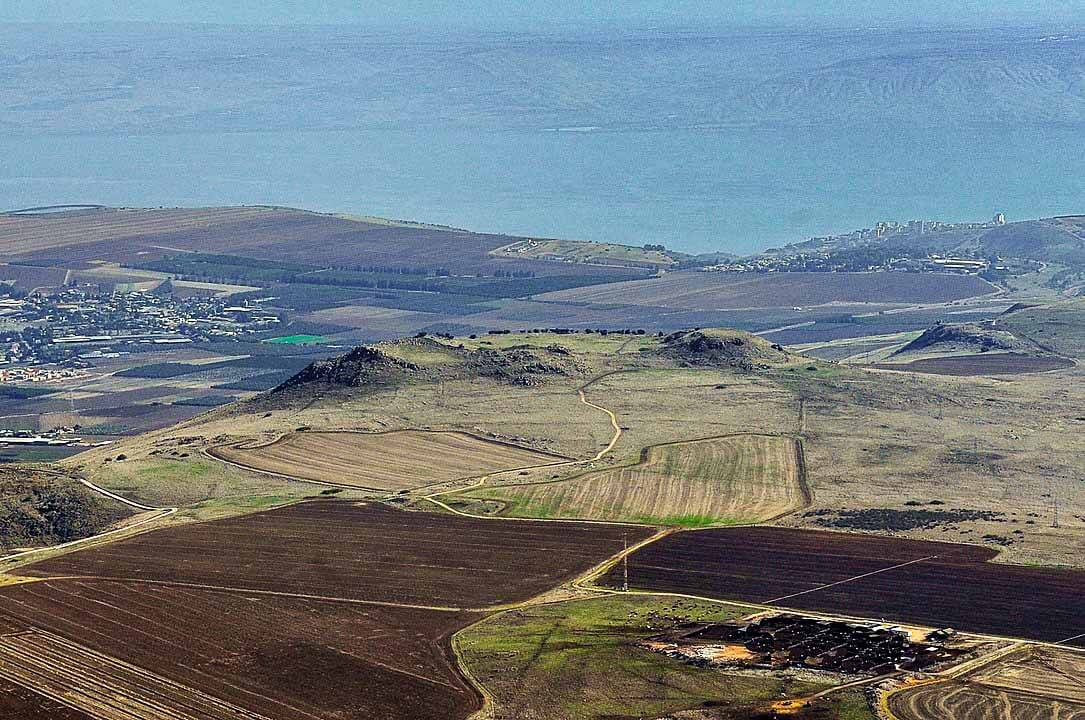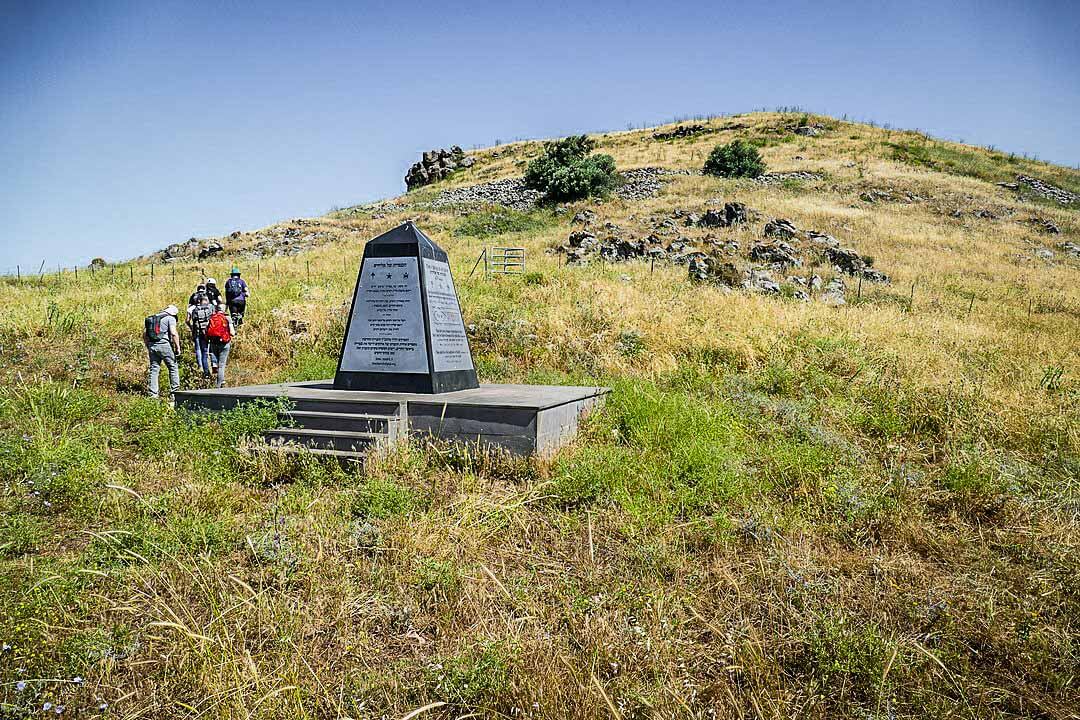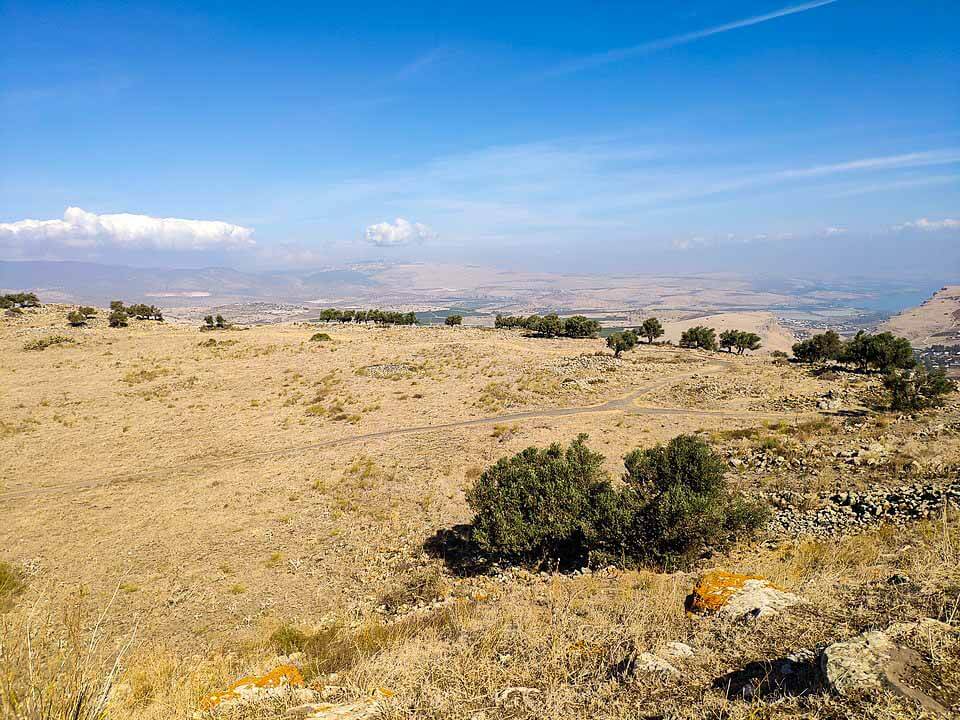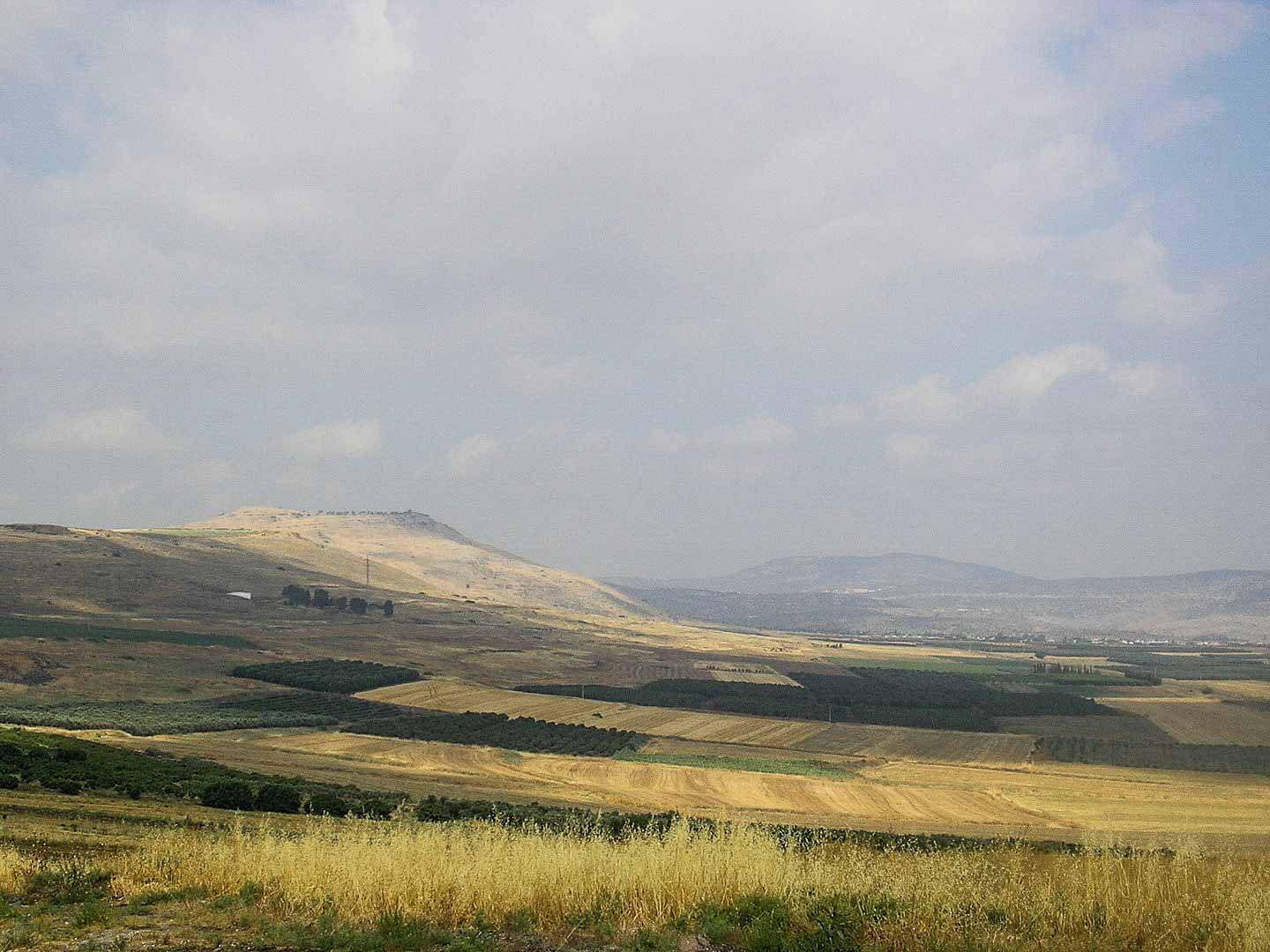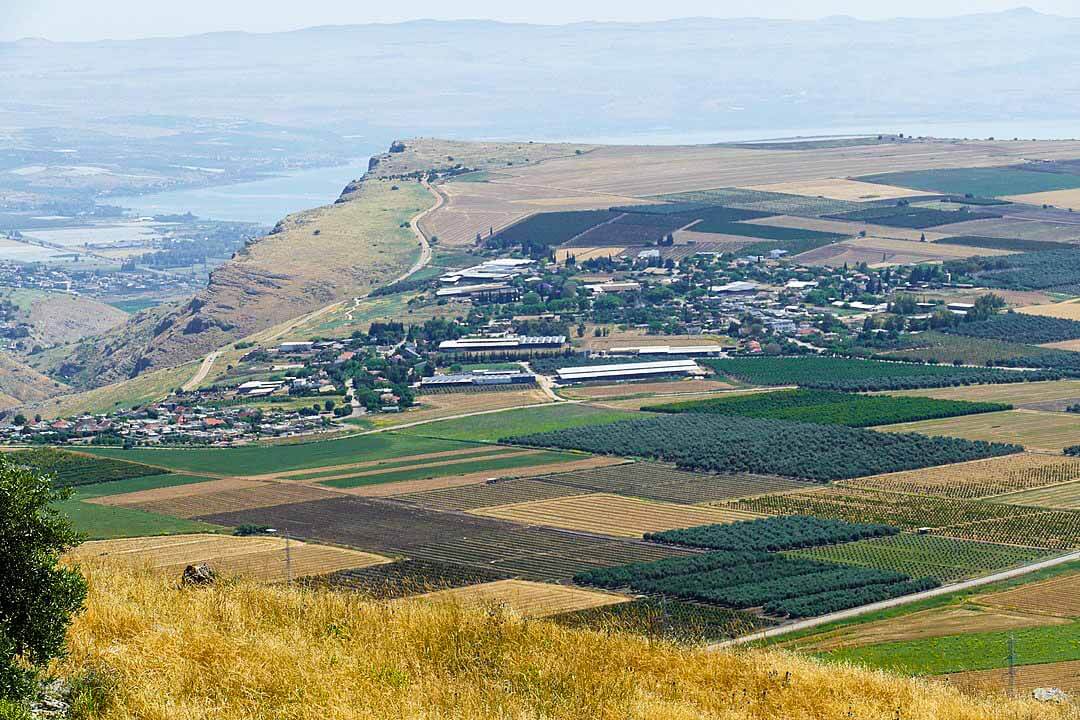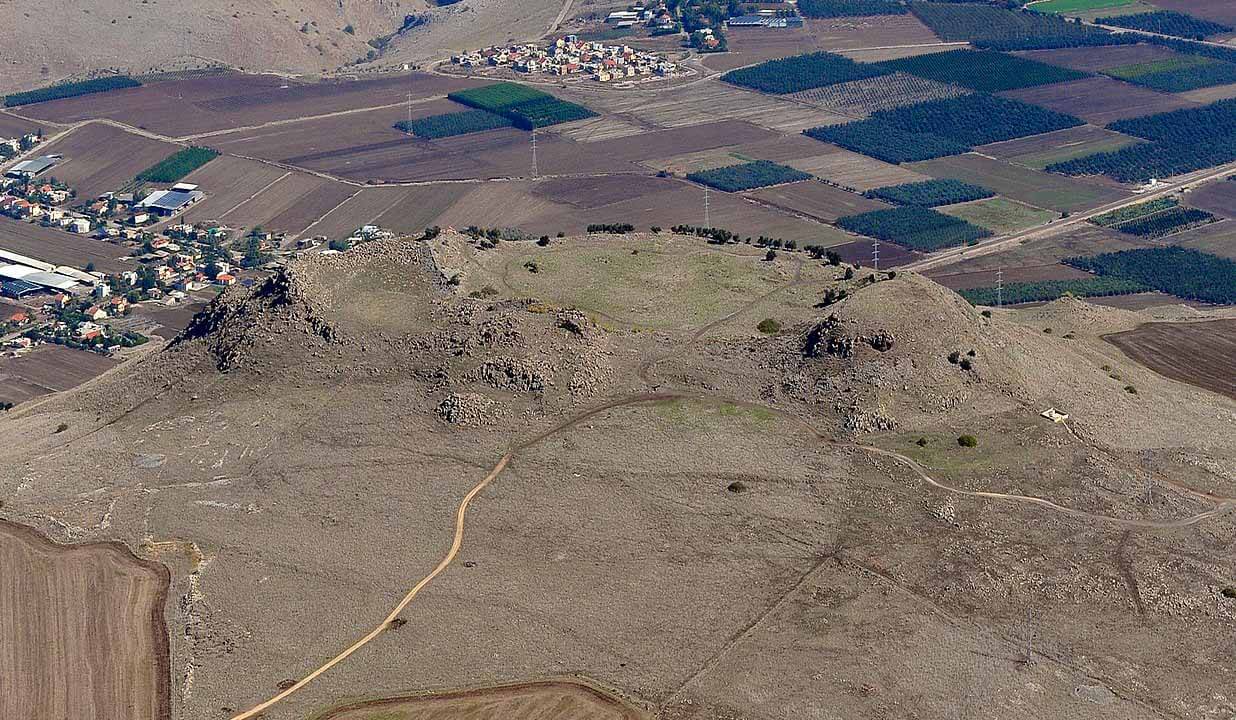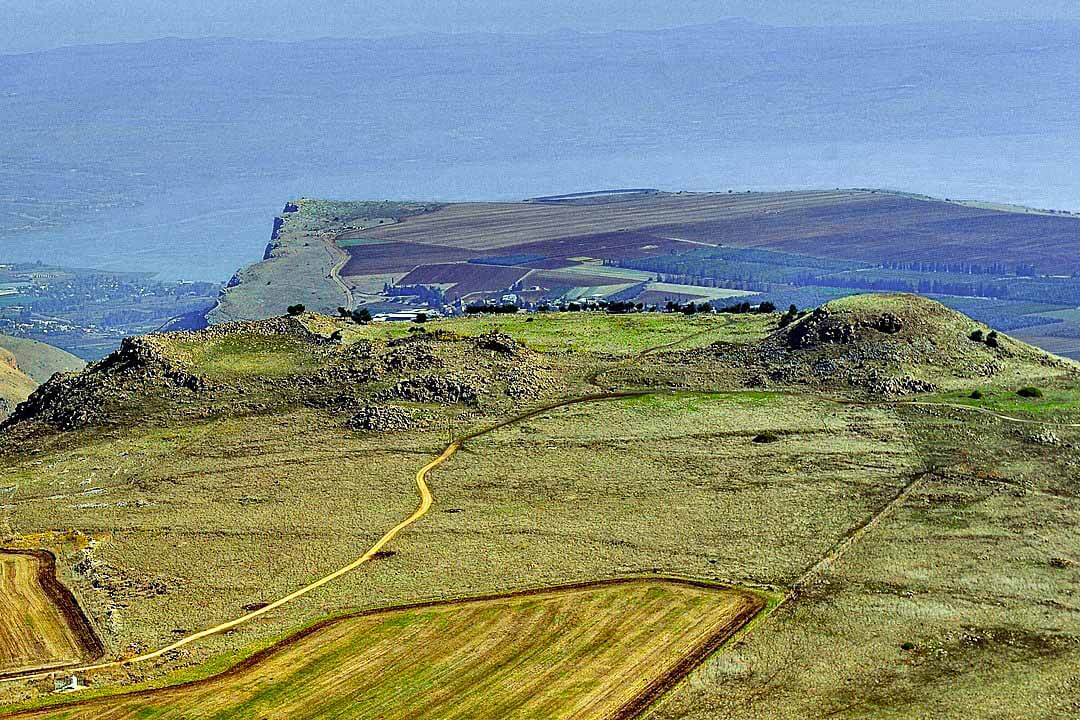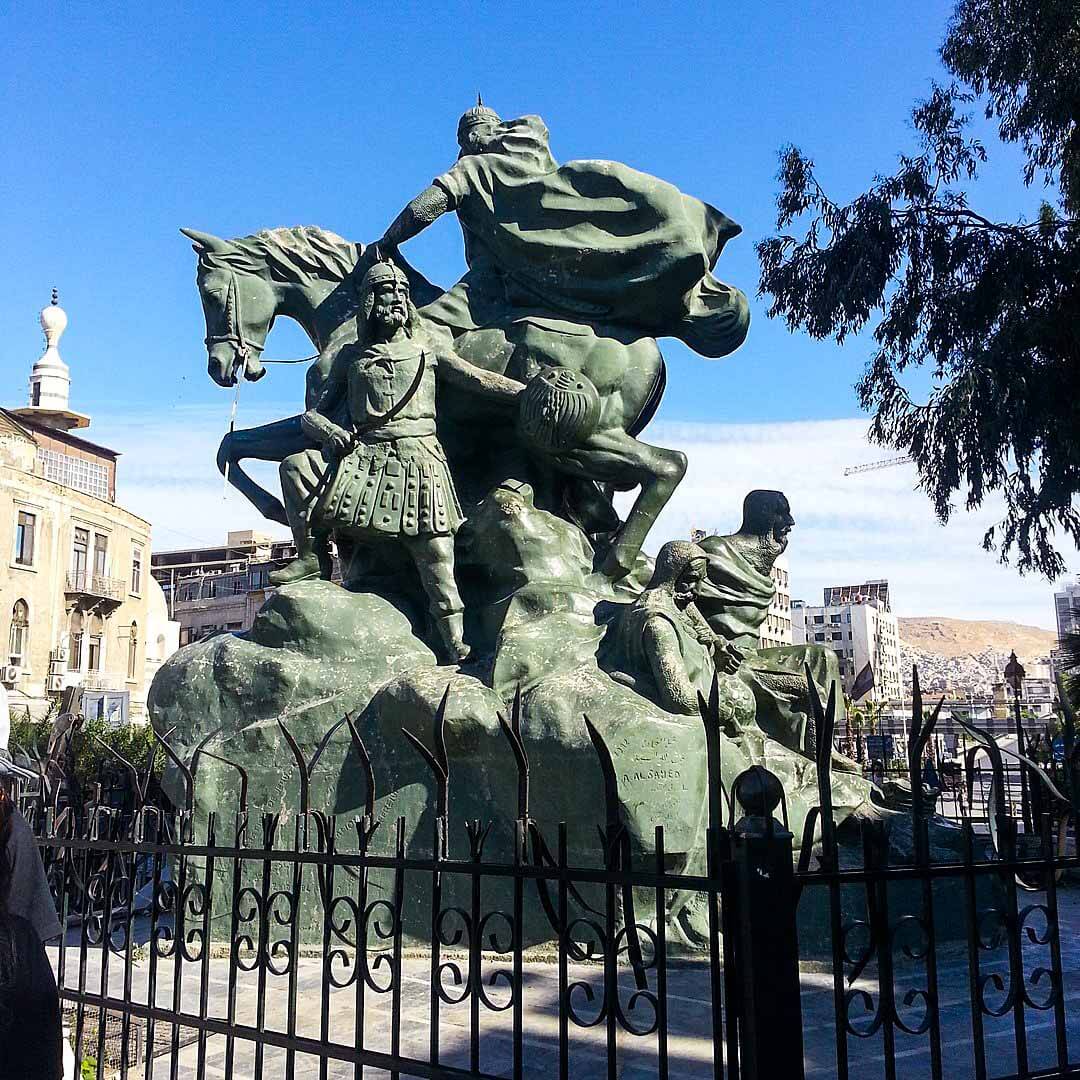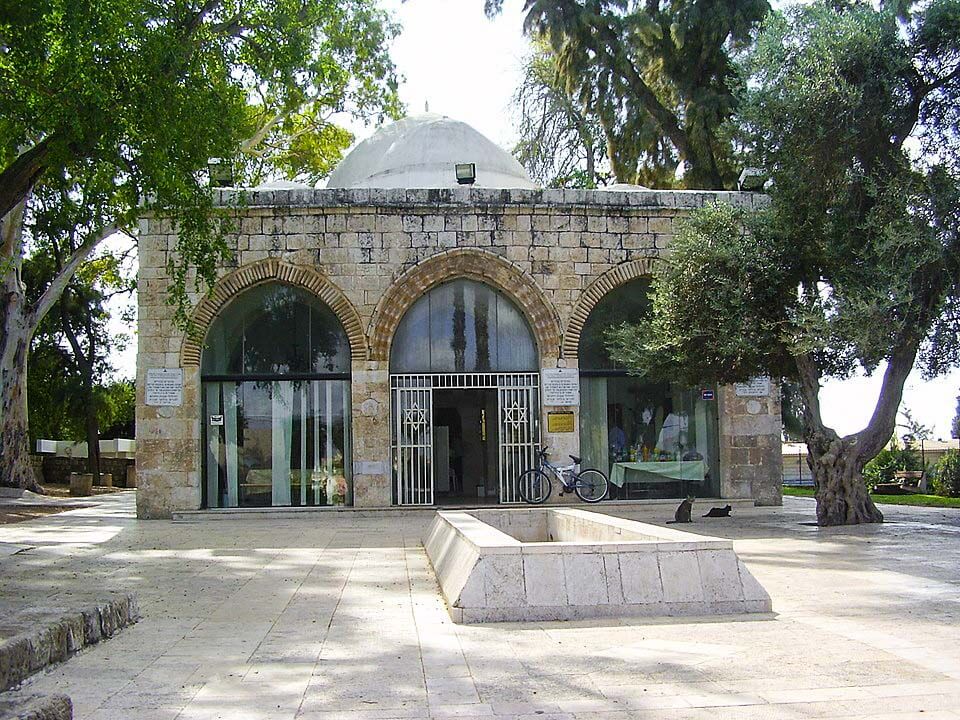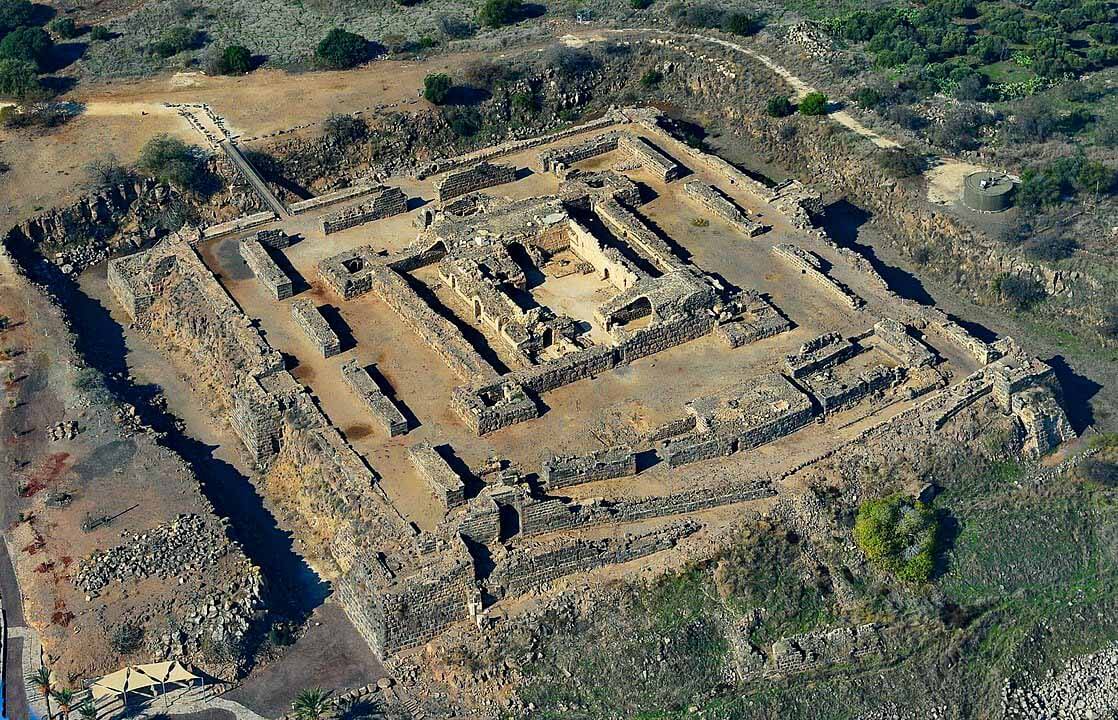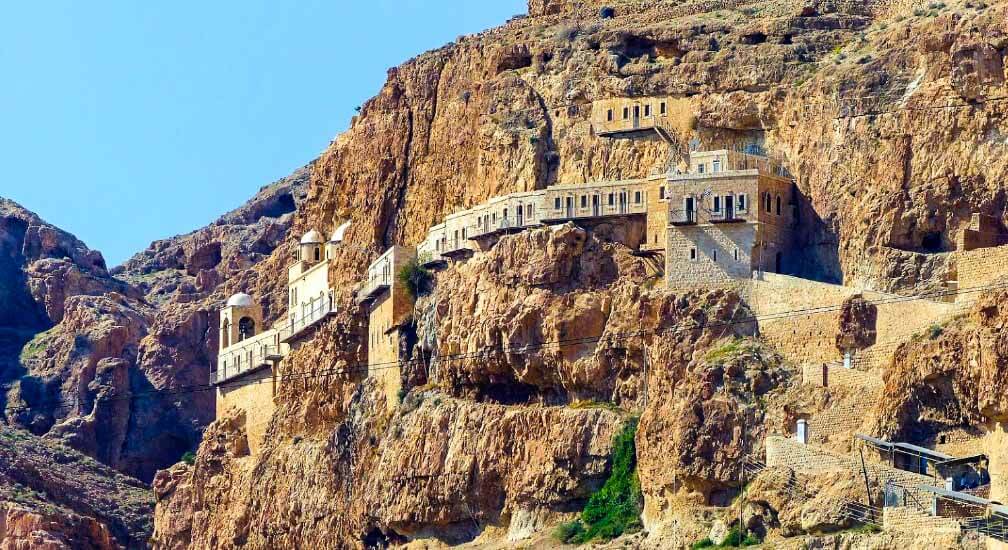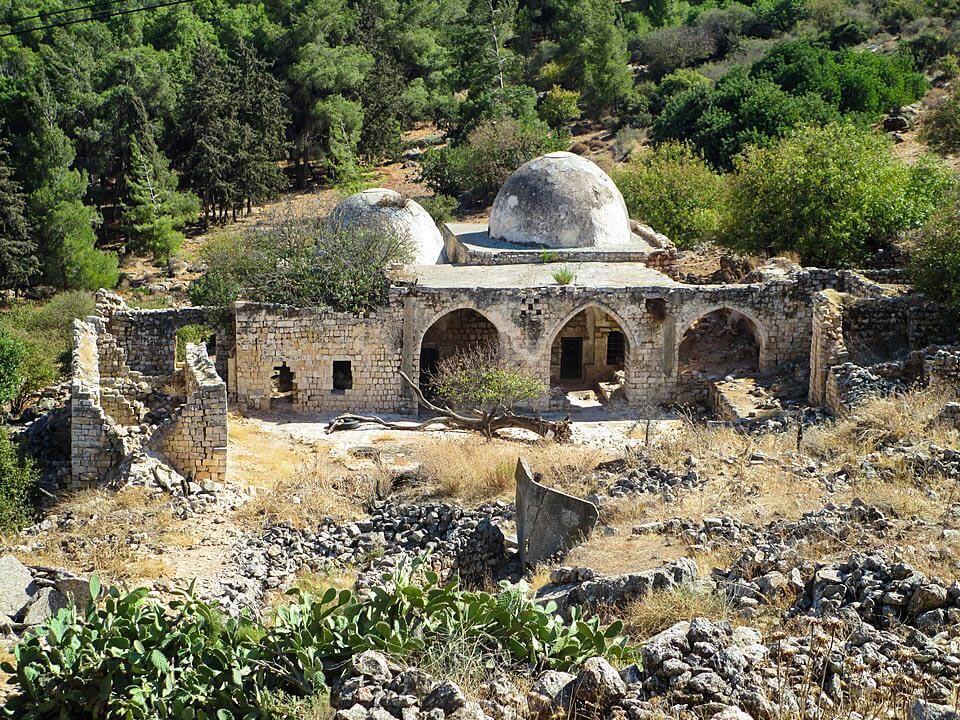Kfar Zeitim, Israel Occupied Palestine
Coordinates: 32.799980, 35.459310
The Horns of Hattin is an extinct volcano with twin peaks overlooking the plains of Hattin in the Lower Galilee, Israel Occupied Palestine.
It is believed to be the site of the Battle of Hattin, Hz. Salahuddin Ayyubi’s رحمة الله عليه victory over the Crusaders in 1187.
The Battle of Hattin was fought in summer when the grass was tinder-dry. Hz. Salahuddin’s رحمة الله عليه troops set fire to the grass, after cutting off the Crusaders’ access to water in the Sea of Galilee.
Hz. Salahuddin رحمة الله عليه built a “victory dome,” Qubbat al-Nasr, on the hill.
Introduction
The Battle of Hattin took place on 4 July 1187, between the Crusader states of the Levant and the forces of the Ayyubid sultan Hz. Salahuddin Ayyubi رحمة الله عليه (Salah ad-Din).
It is also known as the Battle of the Horns of Hattin, due to the shape of the nearby extinct volcano of Kurun Hattin.
Before the battle
On July 3 the crusader army started out towards Tiberias, harassed constantly by Muslim archers.
They passed the Springs of Turan, which were entirely insufficient to provide the army with water.
At midday Raymond of Tripoli decided that the army would not reach Tiberias by nightfall, and he and Guy agreed to change the course of the march and veer to the left in the direction of the Springs of Kafr Hattin, only 6 miles (9.7 km away).
From there they could march down to Tiberias the following day.
The Muslims positioned themselves between the Frankish army and the water so that the Franks were forced to pitch camp overnight on the arid plateau near the village of Meskenah.
The Muslims surrounded the camp so closely that “a cat could not have escaped”.
According to Ibn al Athir the Franks were “despondent, tormented by thirst” whilst Hz. Salahuddin Ayyubi رحمة الله عليه’s men were jubilant in anticipation of their victory.
Throughout the night the Muslims further demoralized the crusaders by praying, singing, beating drums, showing symbols, and chanting. They set fire to the dry grass, making the crusaders’ throats even drier.
The Crusaders were now thirsty, demoralized and exhausted. The Muslim army by contrast had a caravan of camels bring goatskins of water up from Lake Tiberias (now known as the Sea of Galilee).
Battle
On the morning of July 4, the crusaders were blinded by smoke from the fires set by Hz. Salahuddin Ayyubi’s رحمة الله عليه forces.
The Franks came under fire from Muslim mounted archers from the division commanded by Gökböri, who had been resupplied with 400 loads of arrows that had been brought up during the night.
Gerard and Raynald advised Guy to form battle lines and attack, which was done by Guy’s brother Amalric.
Raymond led the first division with Raymond of Antioch, the son of Bohemund III of Antioch, while Balian and Joscelin III of Edessa formed the rearguard.
Thirsty and demoralized, the crusaders broke camp and changed direction for the springs of Hattin, but their ragged approach was attacked by Hz. Salahuddin Ayyubi’s رحمة الله عليه army which blocked the route forward and any possible retreat.
Count Raymond launched two charges in an attempt to break through to the water supply at Lake Tiberias.
The second of these enabled him to reach the lake and make his way to Tyre.
After Raymond escaped, Guy’s position was now even more desperate.
Most of the Christian infantry had effectively deserted by fleeing in a mass onto the Horns of Hattin where they played no further part in the battle.
Overwhelmed by thirst and wounds, many were killed on the spot without resistance while the remainder were taken prisoner.
Their plight was such that five of Raymond’s knights went over to the Muslim leaders to beg that they be mercifully put to death.
Now the crusaders were surrounded and, despite three desperate charges on Hz. Salahuddin Ayyubi’s رحمة الله علي position, were broken up and defeated.
Surrender of crusaders
Prisoners after the battle included Guy, his brother Amalric II, Raynald de Chatillon, William V of Montferrat, Gerard de Ridefort, Humphrey IV of Toron, Hugh of Jabala, Plivain of Botron, Hugh of Gibelet, and other barons of the Kingdom of Jerusalem.
Guy of Lusignan and Raynald of Chatillon were brought to Hz. Salahuddin Ayyubi رحمة الله عليه’s tent.
Hz. Salahuddin Ayyubi رحمة الله عليه offered Guy a drink, which was a sign in Muslim culture that the prisoner would be spared, although Guy was unaware of this. Guy passed the goblet to Raynald, but Hz. Salahuddin Ayyubi رحمة الله عليه struck it from his hands, saying “I did not ask this evil man to drink, and he would not save his life by doing so”.
He then charged Raynald with breaking the truce. Some reports, such as that of Baha al’ Din, claim that Hz. Salahuddin رحمة الله عليه then executed Raynald himself with a single stroke of his sword. Others record that Hz. Salahuddin Ayyubi رحمة الله عليه struck Raynald as a sign to his bodyguards to behead him. Guy assumed that he would also be beheaded, but Hz. Salahuddin رحمة الله عليه assured him that “kings do not kill kings.”
Aftermath
The Crusader king, Guy of Lusignan, was taken to Damascus as a prisoner granted release in 1188, while the other noble captives were eventually ransomed.
After executing Raynald of Chatillon, Hz. Salahuddin Ayyubi رحمة الله عليه ordered that the other captive barons were to be spared and treated humanely.
All 200 of the Templar and Hospitaller Knights taken prisoner were executed on Hz. Salahuddin Ayyubi’s رحمة الله عليه orders, with the exception of the Grand Master of the Temple.
Imad ed-Din, Hz. Salahuddin Ayyubi رحمة الله عليه’s secretary, wrote:
Hz. Salahuddin Ayyubi رحمة الله عليه ordered that they should be beheaded, choosing to have them dead rather than in prison.
With him was a whole band of scholars and sufis and a certain number of devout men and ascetics, each begged to be allowed to kill one of them, and drew his sword and rolled back his sleeve. Hz. Salahuddin Ayyubi رحمة الله عليه, his face joyful, was sitting on his dais, the unbelievers showed black despair.
Captured turcopoles (locally recruited mounted archers employed by the crusader states) were also executed on Hz. Salahuddin Ayyubi رحمة الله عليه’s orders. While nominally Christian, these auxiliaries were regarded as renegades who had betrayed Islam.
Crusader kingdom falls to Hz. Salahuddin Ayyubi رحمة الله عليه
On Sunday, July 5, Hz. Salahuddin Ayyubi رحمة الله عليه marched the six miles (10 km) to Tiberias, and Countess Eschiva surrendered the citadel of the fortress.
She was allowed to leave for Tripoli with all her family, followers, and possessions. Raymond of Tripoli, having escaped the battle, died of pleurisy later in 1187.
In fielding an army of 20,000 men, the Crusaders states had reduced the garrisons of their castles and fortified settlements.
The heavy defeat at Hattin meant there was little reserve with which to defend against Hz. Salahuddin Ayyubi’s رحمة الله عليه forces.
Only some 200 knights escaped the battle.
The importance of the defeat is demonstrated by the fact that in its aftermath fifty-two towns and fortifications were captured by Hz. Salahuddin Ayyubi رحمة الله عليه’s forces.
By mid-September, Hz. Salahuddin Ayyubi رحمة الله عليه had taken Acre, Nablus, Jaffa, Toron, Sidon, Beirut, and Ascalon.
Tyre was saved by the arrival of Conrad of Montferrat, resulting in Hz. Salahuddin Ayyubi رحمة الله عليه’s siege of Tyre being repulsed with heavy losses.
Jerusalem was defended by Queen Sibylla, Latin Patriarch Heraclius of Jerusalem, and Balian, who subsequently negotiated its surrender to Hz. Salahuddin Ayyubi رحمة الله عليه on October 2.


